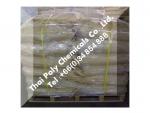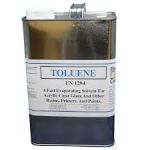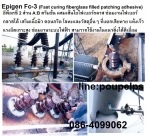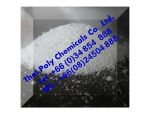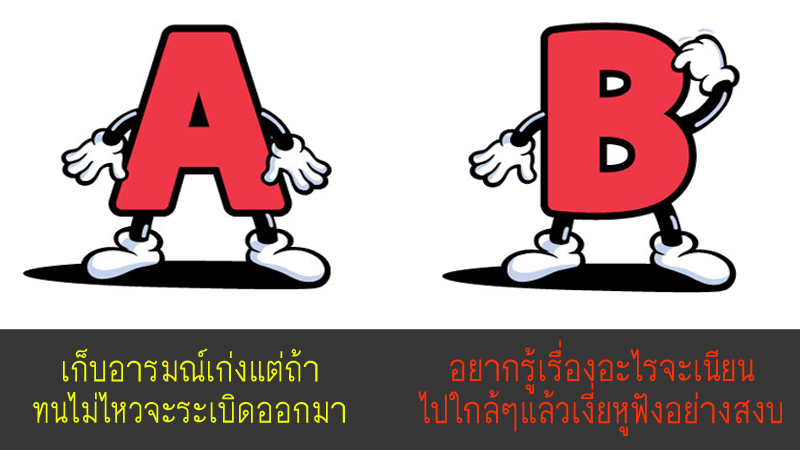Carbon Black คาร์บอนแบล็ค |
฿1 |
|
ชื่อผู้ประกาศ : อัศวิน วิรุธพานนท์ เบอร์โทรศัพท์ : 034854 888 โทรศัพท์มือถือ : 0863261299 ที่อยู่ : 36/5 ม.9 ต.นาดี อ.เมืองสมุทรสาคร การติดต่ออื่นๆ : www.thaipolychemicals.com ร้าน บริษัทไทยโพลีเคมิคอลจำกัด THAI POLY CHEMICALS CO.,LTD (TPCC) |
คาร์บอนแบล็ก, Carbon Black
คาร์บอนแบล็ก คือ
ผลผลิตจากน้ำมันชนิดหนัก เมื่อผสมกับยางจะให้คุณสมบัติทนต่อแรงเสียดทานและมีความยืดหยุ่นสูง คาร์บอนแบล็ก มีขนาดของเม็ดเท่ากันอย่างสม่ำเสมอ ปลอดการปนเปื้อน
Carbon Black เป็นสีดำที่ผลิตจากการเผาน้ำมัน
หรือ แก๊ส ให้ได้เขม่าสีดำ เพื่อใช้เป็นสีดำ ในกระบวนการต่างๆ
1.Lamp Black เป็นกระบวนการผลิตโดยการเผาน้ำมันหนักในยุคแรกๆ ซึ่งจะให้ particle size ของ Carbon Black ใหญ่ที่สุด
2.Furnace Black คือการเผาน้ำมัน มีผลิตเยอะมากและนิยมใช้มากที่สุดในปัจจุบัน จะให้ Particle ที่ละเอียดขึ้น
3.Gas Black ผลิตจากการเผาก๊าซธรรมชาติ ได้ขนาด particle ที่เล็กที่สุดและมีน้ำหนักเบาที่สุด
นอกจากนั้น
ยังสามารถแบ่งแยกออกเป็นชนิดตามกระบวนการผลิตคือ1. Bead คือแบบอัดเป็นเม็ดขนาดเล็กทรงกลม
เพื่อลดฝุ่นละอองในกระบวนการนำไปใช้เนื่องจากสีดำจะทำให้สถานที่ทำงานเปื้อนได้มากที่สุด
ข้อดีคือ ลดฝุ่น ส่วนข้อเสียคือ กระจายตัวยาก2. Powder แบบฝุ่นผงปกติ ไม่ได้ผ่านกระบวนการทำเป็น Bead มีข้อเสียคือฟุ้งกระจายได้ง่าย ข้อดีคือกระจายตัวได้ง่ายกว่า
การใช้ประโยชน์
Carbon Black ผลิตออกมาหลากหลายเกรด
โดยแยกเกรดตาม ขนาดของ particle
size โครงสร้างของ particle และ
สามารถนำมาใช้ประโยชน์ในหลาย Application ดังนี้
1. ใช้เป็น Pigment Black คือใช้เป็นสีดำ ทั่วไปในงานพลาสติก งานพิมพ์ ใช้เกรดทั่วไป
2. ใช้เป็น สีแต่ง Shade สีต่างๆ ในงาน Color matching ให้ได้สีตามต้องการ ใช้เกรดทั่วไปชนิด powder
3. ใช้เป็นสีดำที่มีคุณสมบัติเป็น UV Absorber ในงานท่อ งาน Wire Cable ใช้เกรด UV
4. ใช้เป็น Filler ในงานยางรถยนต์ ใช้เกรด Rubber
5. ใช้เป็นสีดำ ที่มีคุณสมบัติเป็น permanent Anti Static หรือ Conductive ในงาน Electric & Electronic part ต่างๆ ใช้เกรด conductive
คุณสมบัติของ carbon black ตามลักษณะโครงสร้าง
1. โครงสร้างแบบ High Structure จะให้ Shade สีที่ไม่ดำสนิท เนื่องจากโครงสร้างเป็นสายโซ่ต่อกันยาวๆ จึงมีคุณสมบัติการเป็นตัวนำ เช่น Conductive Black
2. โครงสร้างแบบ Low structure ให้ Shade สีที่ดำกว่า แต่คุณสมบัติการนำไฟฟ้าจะด้อยกว่า
คุณสมบัติของ carbon black ตามขนาด Particle
1. Particle ใหญ่ ให้ Shade สีที่ดำน้อยกว่า ( Jetness ต่ำกว่า )
2. Particle เล็ก ให้ Shade สีที่ดำมากกว่า ( Jetness สูงกว่า )
เขม่าดำ[1][2] (อังกฤษ: carbon black) เป็นสสารเกิดจากการเผาไหม้อย่างไม่สมบูรณ์ซึ่งผลิตภัณฑ์ปิโตรเลียม
เป็นต้นว่า น้ำมันดินที่เกิดจากการแตกโมเลกุลด้วยสารเร่งปฏิกิริยา น้ำมันถ่านหิน น้ำมันดินจากการแตกโมเลกุลของเอทิลีน และน้ำมันพืช
Carbon black (subtypes are
acetylene black, channel black, furnace black, lamp black and thermal black) is
a material produced by the incomplete combustion of heavy petroleum products
such as FCC tar, coal tar, ethylene cracking tar, and a small amount from
vegetable oil. Carbon black is a form of paracrystalline carbon that has a high
surface-area-to-volume ratio, albeit lower than that of activated carbon. It is
dissimilar to soot in its much higher surface-area-to-volume ratio and
significantly lower (negligible and non-bioavailable) PAH (polycyclic aromatic
hydrocarbon) content. However, carbon black is widely used as a model compound
for diesel soot for diesel oxidation experiments.[1] Carbonblack is mainly used as a reinforcing filler in tires and other rubber
products. In plastics, paints, and inks carbon black is used as a color
pigment.The current International Agency
for Research on Cancer (IARC) evaluation is that, "Carbon black is
possibly carcinogenic to humans (Group 2B)". Short-term exposure to high concentrations of carbon black dustmay produce discomfort to the upper respiratory tract, through mechanical
irritation.Total production was around 8,100,000 metric tons (8,900,000 short
tons) in 2006. The most common use (70%) of
carbon black is as a pigment and reinforcing phase in automobile tires. Carbon black also helps conduct heat away from the tread and belt area of the tire, reducing thermal damage and increasing tire life. Carbon black particles are also employed in some radar absorbent materials and in photocopier and laser printer toner, and other inks and paints. The high tinting strength and stability of carbon black has also provided use in coloring of resins and non-tire rubber goods. The balance is mainly used as a pigment in inks, coatings and plastics. For example, it is added to polypropylene because it absorbs ultraviolet radiation, which otherwise causes the material to degrade. Carbon black from vegetable origin is used as a food coloring, in Europe known Carbon black has been used in various applications for electronics. As a good conductor of electricity, carbon black is used as a filler mixed in plastics, antistatic agent has provided uses as an additive for fuel caps and pipes for automobiles. Additionally, the colour pigment Carbon Black has been widely used in food and beverage packaging around the world for many years. You can find it used in multi-layer UHT milk bottles in the US, parts of Europe and Asia, and South Africa, and in items like microwavable meal trays and meat trays in New Zealand. Within Australasia the safe use of the colour pigment Carbon Black in packaging must comply with the requirements of either the EU or US packaging regulations and if any colourant is used it must meet European partial Carbon Black should continue to be used in products ? including food packaging for consumers ? in Canada. This was because ?in most consumer products carbon black is bound in a matrix and unavailable for exposure, for example as a pigment in plastics and rubbers? and ?it is proposed that Carbon Black is not entering the environment in a quantity or concentrations or under conditions
There are strict guidelines
available and in place to ensure employees who manufacture Carbon Black are not
in a working environment where they are at risk of inhaling unsafe doses of
Carbon Black in its raw form.Reinforcing carbon blacks
The highest volume use of carbon
black is as a reinforcing filler in rubber products, especially tires. While a
pure gum vulcanizate of styrene-butadiene has a tensile strength of no more
than 2.5 MPa, and almost nonexistent abrasion resistance, compounding it with 50% of its weight of carbon black improvesits tensile strength and wear resistance as shown in the below table. It is
used often in the Aerospace industry in elastomers for aircraft vibration
control components such as engine mounts. Practically all rubber products where
tensile and abrasion wear properties are crucial use carbon black, so they are
black in color. Where physical properties are important but colors other than
black are desired, such as white tennis shoes, precipitated or fumed silica has
been used as a substitute for carbon black in reinforcing ability. Silica-based
fillers are also gaining market share in automotive tires because they provide
better trade-off for fuel efficiency and wet handling due to a lower rolling
loss compared to carbon black-filled tires. Traditionally silica fillers had
worse abrasion wear properties, but the technology has gradually improved to
where they can match carbon black abrasion performance.Pigment
Carbon black (Colour Index
International, PBK-7) is the name of a common blackpigment, traditionally produced from charring organic materials such as wood or
bone. It appears black because it reflects very little light in the visible
part of the spectrum, with an albedo near zero. The actual albedo varies
depending on the source material and method of production. It is known by a
variety of names, each of which reflects a traditional method for producing
carbon black:Ivory black was traditionally produced by
charring ivory or bones (see bone char).Vine black was traditionally produced by
charring desiccated grape vines and stems.Lamp black was traditionally produced by
collecting soot, also known as lampblack, from oil lamps.Newer methods of producing carbon
black have superseded these traditional sources, although some materials are
still produced using traditional methods. For artisanal purposes, carbon black
produced by any mean remains a commonly used item.Surface chemistry
All carbon blacks have chemisorbed
oxygen complexes (i.e., carboxylic, quinonic, lactonic, phenolic groups and
others) on their surfaces to varying degrees depending on the conditions of
manufacture. These surface oxygen groups are collectively referred to as
volatile content. It is also known to be a non-conductive material due to its
volatile content.The coatings and inks industries
prefer grades of carbon black that are acid oxidized. Acid is sprayed in high
temperature dryers during the manufacturing process to change the inherent
surface chemistry of the black. The amount of chemically-bonded oxygen on the
surface area of the black is increased to enhance performance characteristics.
สอบถามข้อมูลเพิ่มเติมได้ที่
ฝ่ายขายThai Poly Chemicals Co., Ltd.
บริษัท ไทยโพลีเคมิคอล จำกัด
ที่อยู่36/5 ม.9 แขวง/ตำบลนาดี
เขต/อำเภอเมืองสมุทรสาคร
จังหวัดสมุทรสาคร รหัสไปรษณีย์74000Tel.: 034854888,
034496284
Fax.: 034854899,
034496285
Mobile: 0824504888,
0800160016
Website :
www.thaipolychemicals.comEmail1 : thaipolychemicals@hotmail.com
Email2 : info@thaipolychemicals.com
ผงคาร์บอนcarbonblackblackแคลเซียมไฮดรอกไซด์carbonN330คาร์บอนแบล็คCalciumผงสีดำผงถ่านดำ

